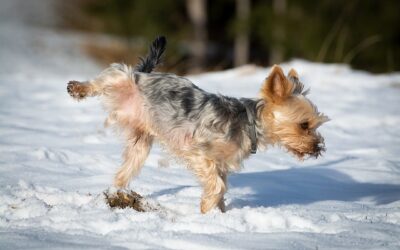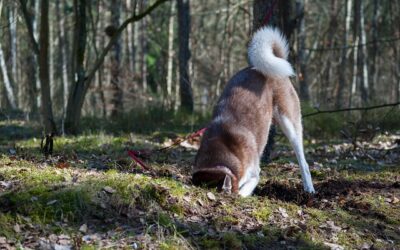Dogs are amazing creatures that have been domesticated for centuries. They are known to be loyal and loving companions and make great pets for families. However, training a dog can sometimes be difficult, especially when you don’t know where to start. Clicker training is a popular method of training dogs that can be very effective if done correctly. This article will discuss how to use clicker training for dogs and its benefits in pup training.
What is Clicker Training?
Karen and Gary Wilkes introduced clicker training in 1992 to communicate acceptable dog behaviors. They built on the operant conditioning theory by behaviorist B. F. Skinner which opines that the consequences of behavior will determine if that behavior is repeated. Clicker training is a method of positive reinforcement that rewards your dog for desired behaviors with a clicker sound. It bases on the idea that dogs learn best when they receive an immediate reward for doing something correctly. This training employs operant conditioning and relies on associating specific actions with rewards like treats or verbal praise.
Clicker trainers use precise timing to let the dog know when they have done something the trainer approves of. It is important to note that clicker training does not involve punishing the dog for undesirable behaviors but rather reinforcing desired behaviors by reward. With dog clicker training, you use a small plastic device called a “clicker” to make an audible noise each time your dog performs a task/action correctly. This sound lets the dog know that they have done something right and will be rewarded for it.
What Is A Clicker In Dog Training?

A clicker is a small device that makes an audible “click” sound when pressed. This sound reinforces the desired behavior that your dog has just done, like sitting on command or coming when called. It also serves as an attention-getter, so you don’t have to yell at or physically grab your dog to get them to look at you. Clickers are often used in conjunction with treats; sometimes, the act is referred to as “clicking and treating,” simply giving the dog a treat after they have done something correctly.
Why Is Clicker Training Beneficial?
Clicker training is a great way to train your dog positively and humanely effectively. It has been proven to be much more effective than traditional punishment-based training methods, as dogs learn better when rewarded for desired behaviors rather than punished for undesirable ones. Clicker training also allows you to monitor your dog, understand how your dog learns, and give precise feedback on your dog’s behavior.

Clicker training dogs takes patience and practice. Here are some more reasons why clicker training is beneficial in dog training.
1. It helps your dog form positive associations with desired behaviors.
2. Clicker training encourages active learning and independent thinking in your dog, helping them understand the cause and effect of behavior without punishing them for mistakes.
3. It provides clear communication between you and your pet, letting them know exactly when they have performed the desired behavior.
4. Clicker training is a humane and gentle way to train your dog, as it does not involve physical punishment or intimidation-based tactics.
5. Clicker training can be used for various behaviors and tasks, such as teaching basic commands like sit, stay, down, and come, or even more complicated tasks like agility or service dog training.
Clicker training is not just about teaching commands; it can also help improve your dog’s mental development. Clicker training encourages problem-solving skills, as your pup has to think and make choices to receive their reward. This mental stimulation helps increase brain activity, leading to many positive benefits, such as increased self-confidence, improved memory, and better behavior.
Clicker training also helps your dog learn to focus in distracting situations and can even help reduce anxious behaviors such as barking or destructive chewing. With regular practice and positive reinforcement, clicker training can be a great way to give your pup the mental stimulation they need to reach their full potential.
How To Use Clicker Training for Dogs
Clicker training is a great way to teach your pup new behavior and reinforce good habits. Before you start training, ensure you have the right equipment: a clicker, treats, and a quiet place to work with your dog. Start by pressing the clicker once and immediately giving them a treat. Repeat this several times, so they associate the “click” sound with coming over to get a treat.

Once your pup is used to the clicker and treats, you can teach them simple commands like “sit.” Each time your dog sits correctly, press the clicker at that exact moment and give them a treat as a reward. If your dog needs help understanding what you want from them, try using clearer commands and hand signals. As your pup progresses, you can add more advanced commands to their repertoires, such as agility or service dog training.
Follow these steps to start clicker training with your furry friend.
Introduce The clicker/load The Clicker
Start by introducing the clicker to your pet positively, such as offering treats when they hear it so that “click” becomes synonymous with “treat.”
Slowly Add A Behavior Cue
Once your pup is familiar with the clicker’s sound, start adding in a behavior cue. Click and treat when your dog performs the desired action. Keep each training session short, ensuring their attention stays focused and they stay calm and energized. Here are some basic behavioral cues that you can begin with:
- Sit: Have your pup stand in front of you, then hold a treat over their nose and slowly move it back over their head while saying the command “sit.” As soon as they sit, click and give them the treat.
- Stay: Start with a simple stay command by having your pup sit and then hold up your hand at a stop sign. Tell them “stay” and then step away. If they stay, click and give them a treat.
- Come: Have your pup sit a few feet away from you and then call their name while clapping or using another noise to get their attention. The moment they come towards you, click and give them a treat.
- Down: While holding a treat, lure the dog into the down position. As soon as they lay down, click and reward them.
Repeat The Process
Consistency is key to successful clicker training. It’s important to keep repeating the process until your dog understands what you want them to do and associates the clicker sound with performing that task correctly and consistently.
Reinforce Good Behavior

Dogs repeat behaviors that are rewarded. Make sure to click and treat each time your dog does something correctly, as this will encourage your pup to keep up the good behavior.
Increase The Training Difficulty
As your pup progresses, add different difficulty levels to their training sessions. This will help keep them engaged and prevent boredom.
Conclusion
Clicker training can be a great way to train your pet effectively and humanely, giving them the mental stimulation they need for long-term success. With patience, consistency, and lots of treats, your pup will soon respond appropriately to commands by using clickers as reinforcement for desired behaviors. Additionally, it is important to remember that clicker training should not be used as a replacement for other forms of dog training.
Clicker training is best when used with verbal commands or hand signals. It is also important to remember that clicker training takes time and dedication to be effective. As with any other form of dog training, results may vary depending on the individual dog and its temperament. Clicker training should not be used as a quick fix to behavioral issues but as an additive tool to your overall approach to training.
Always remember to keep safety in mind when introducing new activities or methods of training to your pup! If you are ever uncertain of how to proceed, consult a professional trainer or behaviorist who can safely and effectively guide you through the process safely and effectively.
Pet parents looking to prevent a particular behavior should avoid using the clicker to gain the dog’s attention as the dog associates doing something undesirable to gain a reward. Both you and the dog must gain an understanding of effective communication. Using a marker word is my preference for the training process.
You want to ensure the dog responds to any verbal command you give, whether it’s to reward new behaviors or to prevent a bad behavior. The clicking sound can only give one message, and there are certain behaviors that you do not want to reward. Whether you decide to clicker train your dog or to utilize a marker word, you must ensure that you mark/click the precise moment the behavior is shown. It will be a learning curve for both you and your dog.
Professional Dog Training With Ruff House
If you are looking for a professional dog training service, Ruff House is an excellent option. Ruff House offers programs to train dogs to be obedient. We also offer custom training programs for all breeds and ages of dogs. We provide behavior consultations for owners experiencing issues with their pets. Our services include dog walking, obedience training, aggression rehabilitation, setting boundaries, and more.
We have various resources that can help you get started with everything, from basic commands to more advanced training. Our experienced trainers will work with you and your dog to develop the behaviors you are looking for while also keeping the training fun and positive. Contact us today to get started!




